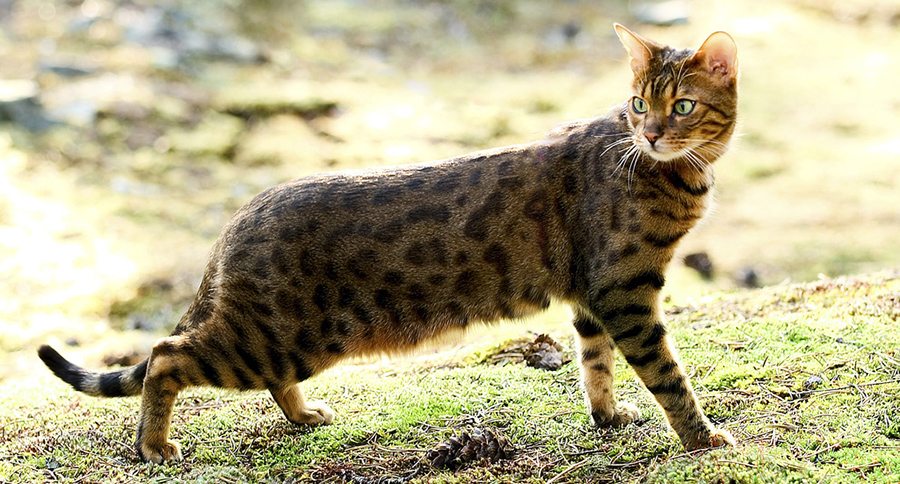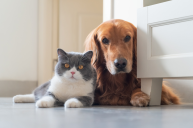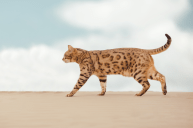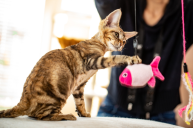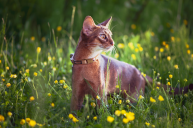WATCH NOW:Bengal Cats Are Like Mini Leopards
The Bengal cat is the closest you can get to a pet leopard.
The Bengal cat breed is the result of a cross between a domestic cat and an Asian leopard cat. This heritage gives them the look of a wild cat but the temperament of a house cat. Cat enthusiasts have been trying to create such a hybrid since the 1800s, but the offspring of these experiments were usually sterile. It wasn't until 1983 that a viable breed was created.
According to VetStreet.com, Jean S. Mill began the Bengal breeding program in 1963, and Bengals today descend from cats bred by her in the early 1980s.
Bengal cats are full of energy and are not well-suited for anyone who isn't prepared to devote a lot of time and attention to a pet. They are constantly exploring their environments, and unlike most cats, they also love water. Bengals are known for getting into trouble, but they are trainable. With proper attention, Bengal cats can be great companions.
These house cats are more like a jungle cat! Bengals love to climb, the higher the better. It's important to provide them with tall cat trees and window perches.
The Bengal cat's coat color is most commonly seen in the brown spotted tabby pattern, they may also be found in the marbled pattern.
The International Cat Association recognized Bengals in 1991. The breed is not recognized by the Cat Fanciers Association. Bengals participate in TICA shows throughout the world! Fans of the breed love their exotic look and it's that "wild look" that makes them extremely popular in the United States.
If you're looking for a resource, the International Cat Association is the best organization to contact. And instead of looking at the pet store, it's better to reach out to rescue groups like the Bengal Rescue Network.
These exotic cats make great companion animals!
Bengal cats are also very vocal. If they are unhappy they will be sure to tell you!
If you have questions about general health concerns for the breed than here's what you need to know:
Bengals are generally healthy, but the following diseases have been seen in the breed,
- Flat-chested kitten syndrome, a deformity that can range from mild to severe. Kittens who survive to adulthood usually show no signs once they reach maturity.
- Hip dysplasia, which in severe cases can cause lameness
- Hypertrophic cardiomyopathy, a form of heart disease that is heritable in some breeds.
- Progressive retinal atrophy, a degenerative eye disease.
Hover over the image for more information.
WATCH NOW: Cat Videos Actually Make You More Productive!
